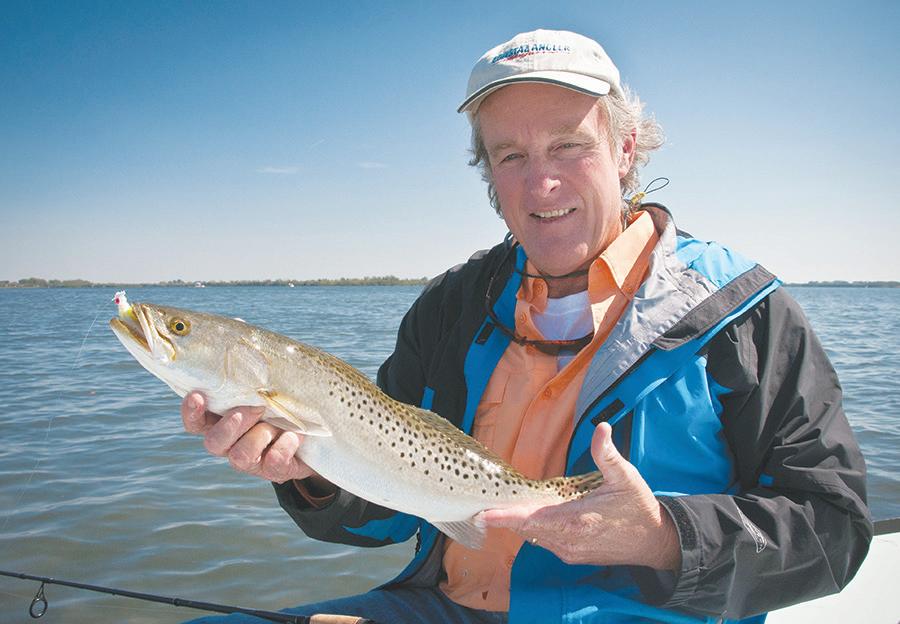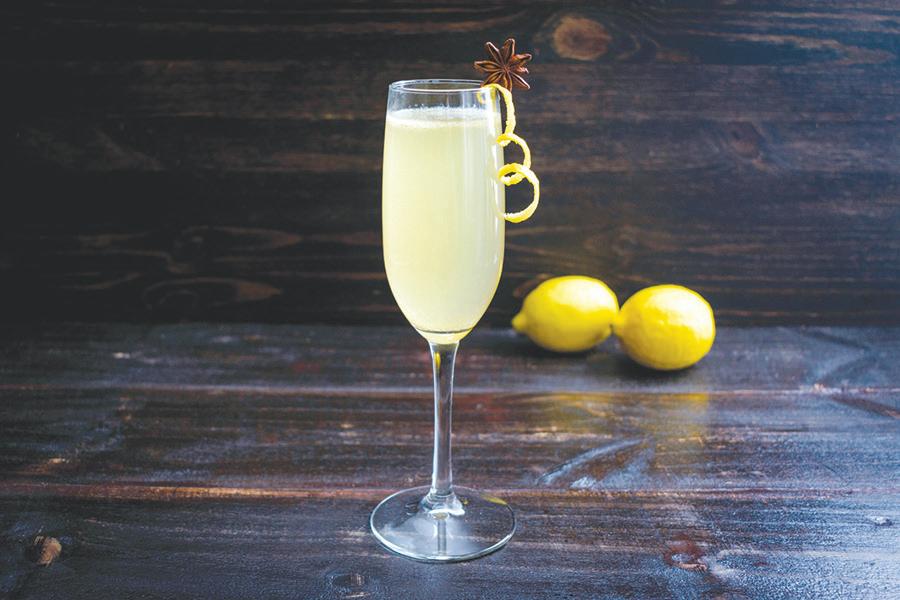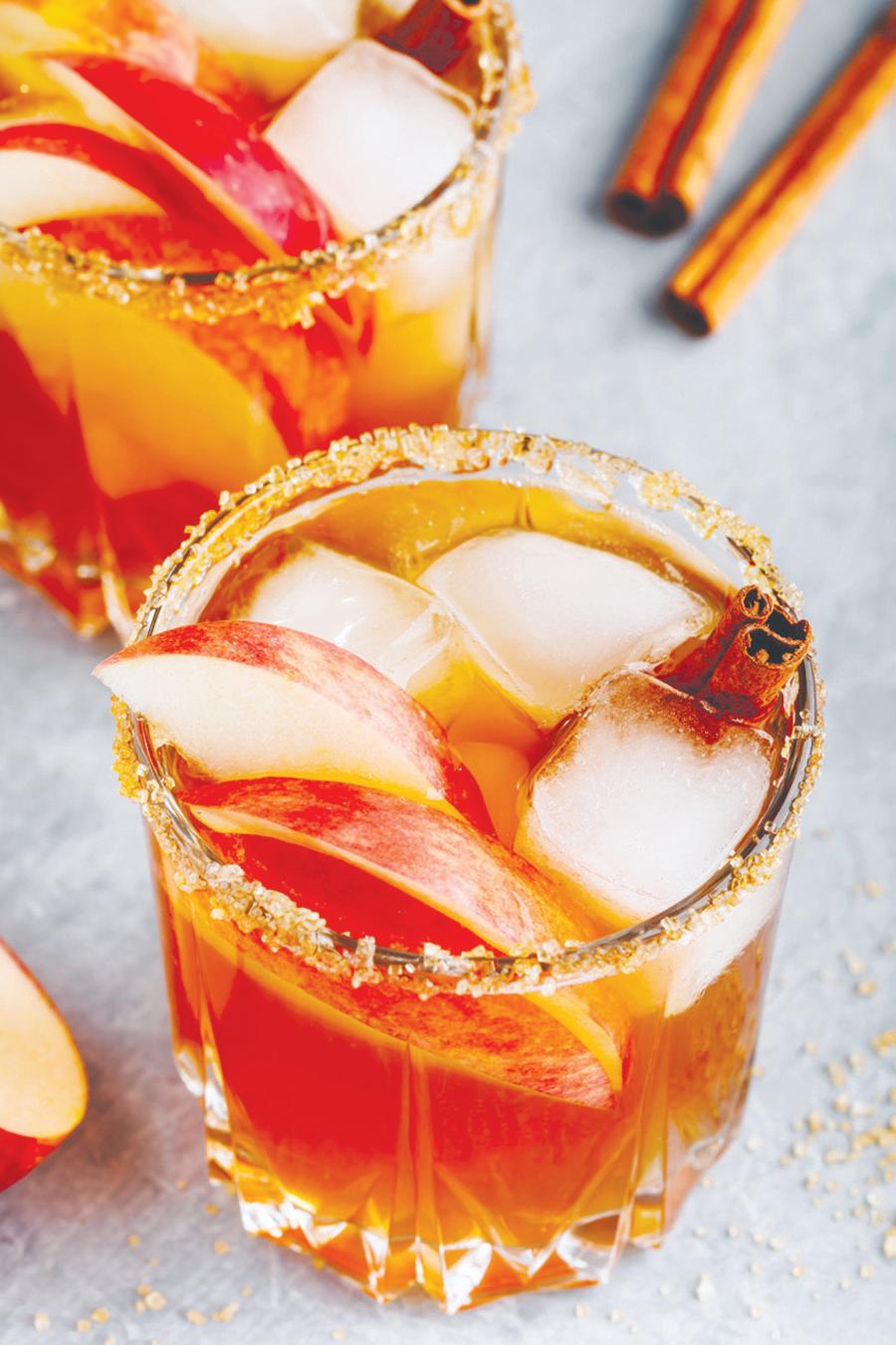
7 minute read
OUTDOORS
20 THE SUN OUTDOORS DECEMBER 22, 2021
Against the wind
Reel Time
RUSTY CHINNIS

A“perfect” day on the water is hard to come by. Why? Because it just doesn’t happen that often. Rain, clouds and extreme temperatures can make fishing challenging, but of all the weather conditions, the wind can be the most daunting.
The wind makes for an uncomfortable ride in a boat, tests an angler’s casting ability and has a way of just wearing on your constitution. On windy days, you’ll find most anglers huddled in an area that provides some protection. That might be the lee of an island, a canal or a pass where they can get some relief from the choppy water and poor visibility. Sometimes the conditions will shut the fishing down and discourage fishermen from even staying on the water. While avoiding the windy days might be an option for some anglers, others will have a limited window of opportunity and have to make the best of a “bad” situation. In truth, the wind can actually provide prospects that most anglers might miss.
Experience has shown me that fishing in the lee on windy days might be the opposite strategy to employ. This might seem counterintuitive since fishing in areas exposed to the full force of the wind is definitely less daunting. In reality, the wind and the choppy water it produces might actually concentrate baitfish and crustaceans, providing predators with an opportunity to set up an ambush. The wind might mean it’s hard to see the fish if you’re sight fishing, but it also makes them less spooky and less visible to the prey they’re after.
Recently I had the displeasure of fishing just such a day. The weather guessers had correctly predicted winds from 12-15 knots. While we might have chosen not to fish that day, it happened to be the only time my friends and I could find to get together. We started out with the intention to fly fish but conditions (winds that actually gusted to 25 knots) soon made us glad we had stowed spin tackle under the gunnels. Wind doesn’t usually deter single-minded fly anglers, but even the most die-hard know when to say when. We worked the flats determinedly for close to an hour and only managed to catch one small trout before we finally made the switch to spinning tackle.
Casting jigs and top water plugs was a whole lot easier than attempting to fly fish, but the fish still didn’t respond to our new strategy. Moving from spot to spot we were determined to find some willing fish but even though we saw a few we couldn’t buy a bite. Fortunately, that changed late in the day when we targeted some deepwater flats that were fully exposed to the now howling wind. Using DOA jigs and the DOA Deadly Combo we began encountering some hungry trout. For some reason, a later afternoon shift in the tide had put them on the feed. In five or six drifts we caught and released some beautiful fish to 22 inches. This reminded me that if you’re determined enough and persist you can usually find some time of the day or tide when fish will feed. In this case, it turned what could have been a frustrating and futile day into a successful outing.
If you can hold out for better days to fish, you’re a lucky angler. Most fishermen don’t have that luxury. In any case, if you’re determined and use some counterintuitive logic, you have a good chance of turning a windy day into a successful outing, even against the wind.

RUSTY CHINNIS | SUN Captain Rodney Smith braved a windy day and was rewarded with this nice trout.
Warm weather brings out snook, trout bite
CAPTAIN DAVE WHITE
Just like the temperatures lately, fishing around the Island has been hot. It’s been unseasonably warm so far, with water temperatures still around 70 degrees. Normally, we’re fishing for sheepshead, black drum, redfish and pompano inshore. But with the high temperatures we’re still targeting snook, redfish, trout, and gag grouper, primarily. We’re still finding sheepshead, but not getting the big ones quite yet.
Offshore, yellowtail snapper, mangrove snapper, gag grouper, amberjack, African pompano and blackfin tuna are our primary focus. It looks like the temperature is going to drop a bit midweek, so the wintertime critters should start moving in more. Good luck and happy holidays!












DECEMBER 22, 2021 FOOD & WINE THE SUN 21
Champagne dreams
Brian Mathae

HURRICANE HANKS
AChampagne toast is the traditional way to celebrate many events, but most notably the new year. How did Champagne earn this prominent position?
It started centuries ago with European aristocrats enjoying the bubbly at all their parties. Wine was originally a religious beverage in France, but after the revolution it became more of a secular one. As Champagne grew in prominence, its use evolved. The “holy water” contained in a Champagne bottle replaced priests at events like the christening of a new ship. Champagne quickly became a status symbol that everyone wanted to be part of. Between 1800 and 1850, Champagne soared in popularity. In a relatively short 50 years, production increased from around 300,000 bottles a year to 20 million bottles a year.
By law, Champagne is a sparkling wine made from grapes grown in the Champagne region of France. Initially, bubbles in wine were viewed as a defect of winemaking. The bubbles were most often found in wines from the Champagne region. The “sparkle,” or effervescence, results from the natural fermentation of residual sugars in the bottle.
Wine was often transported in wine barrels to England where it would be bottled and sold. It was discovered in England that due to the low temperatures during winter in the Champagne region of France, the fermentation process was prematurely halted. This left residual sugar and dormant yeast in the wine. When the wine was shipped and bottled in England, the fermentation process would start again when the weather warmed.
When the bubbles became desirable instead of a defect, they posed a danger. Deliberate sparkling wine production started before there was a suitable bottle to contain it. Cellar workers would have to wear heavy iron masks to prevent injury from exploding bottles. If even one exploded, there was often a chain reaction whereby cellars could easily lose over half their bottles. Full sparkling wines have nearly twice the pressure of an automobile tire, so fortunately for us, modern bottles and cork stoppers are strong enough for our safety.
Whether you prefer Champagne Prosecco, or any of the other regionally or varietal named sparkling wines, don’t forget about using it in cocktail recipes. Here are a few crowd pleasers that are a delight to enjoy all day long around the holidays. Visit Hurricane Liquors or LBK Liquors and our staff will gladly help you find the right product for your celebrations!


French 75
Ingredients (1)
1 oz gin 1/2 oz fresh squeezed lemon juice 1/2 oz simple syrup 4 oz Champagne Lemon twist for garnish
Directions
Shake gin, lemon juice, simple syrup and ice until well chilled. Strain into a Champagne glass. Top with Champagne and garnish with lemon twist.

Apple Cider Mimosa
Ingredients (4)
2 tbs granulated sugar 1 tbs ground cinnamon 1 cup apple cider 1 bottle sparkling wine Apple slices and cinnamon stick for garnish
Directions
On a small plate, mix sugar and cinnamon thoroughly. Wet the rim of the glass and dip in the mixture. Fill glass 1/4 full with apple cider and top off with sparkling wine. Add apple slices and cinnamon stick.





